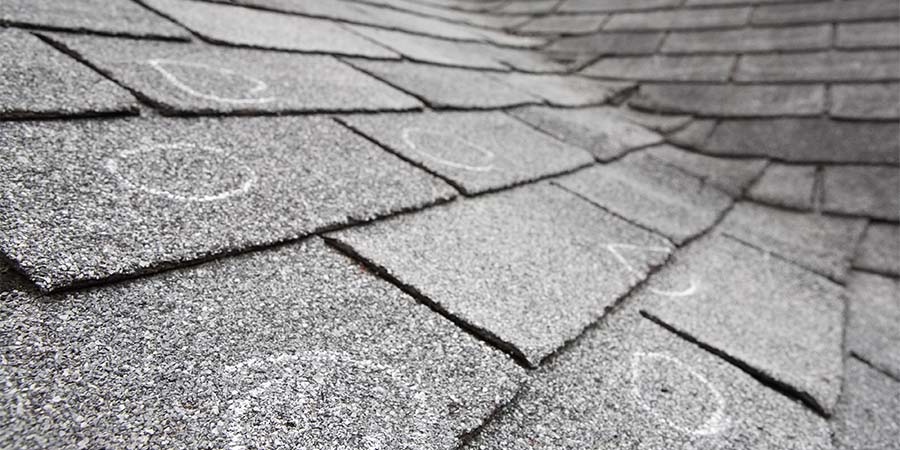What Does Hail Damage on a Roof Look Like? How to Spot the Signs After a Storm













In Dallas Texas, hail is practically a season of its own. From spring through early fall, severe storms can pummel your roof with hail the size of golfballs and leave damage in their wake. Knowing what hail damage looks like, and what to do next, can save you thousands in repairs and protect your biggest investment.
Below, you’ll find what to look for on some of the most common types of roofing, plus steps for inspecting, documenting, and filing an insurance claim.
Asphalt Shingle Roofs
Asphalt shingles are the most common roofs around Dallas. Hail can cause:
- Bruises or soft spots: Run your hand over the shingles to feel for mushy areas.
- Granule loss: Look for bald patches or check your gutters for piles of gritty granules.
- Cracks or splits: Shingles may have clean breaks or jagged tears.
- Dents: Especially around vents, flashing (the metal that prevents water from entering vertical components like your chimney), and ridge caps.
Designer Shingle Roofs
These premium shingles come in varied shapes and patterns. Hail can damage them in ways similar to traditional shingles. Keep an eye out for:
- Fractures and rips in the shingles
- Misaligned patterns where shingles have broken or moved.
- Color inconsistencies where granules were knocked off.
Tile Roofs (Clay or Concrete)
Tile roofs are tough, but big hailstones can still do serious damage. Look for:
- Cracked, broken, or shattered tiles
- Chipped corners or small impact divots.
- Loose tiles sliding out of place.
Slate Roofs
Natural slate is strong but not immune to hail. When impacted by hail, slate may exhibit
- Cracks running across the slate pieces.
- Broken tiles with fragments collecting in gutters.
- Loose or slipping slates that have shifted from impact.
Metal Roofs
Metal roofs can stand up to smaller hail, but large stones still cause problems:
- Dents or pockmarks across panels.
- Bent seams or flashing.
- Punctures in severe cases
Repairing Hail Damage: What Homeowners Should Know
Once you identify hail damage, it’s time to call in a professional roofer to fix it. Your contractor may:
- Replace individual shingles or tiles
- Seal cracks to prevent leaks
- Apply protective coatings
- Replace your entire roof (in cases where the large portions are damaged)
Many homeowners insurance policies cover hail damage, but it's important to review your policy to understand what is covered and what is not. Filing an insurance claim for hail damage can be a complex process, so make sure you work with a roofer who will help you when filing a claim.
Your roofer should:
- Document all damage using photographs and notes
- Submit your claim promptly
- Assist you with paperwork and insurance adjuster meetings
Conclusion
By understanding the signs of hail damage and conducting regular inspections, you can identify issues and address them early. Regular maintenance and timely repairs can help you extend the life of your roof and prevent costly issues down the line. By being prepared and understanding what hail damage looks like, you can enjoy peace of mind that your home is well-protected from the elements and that your roof remains in great condition.








